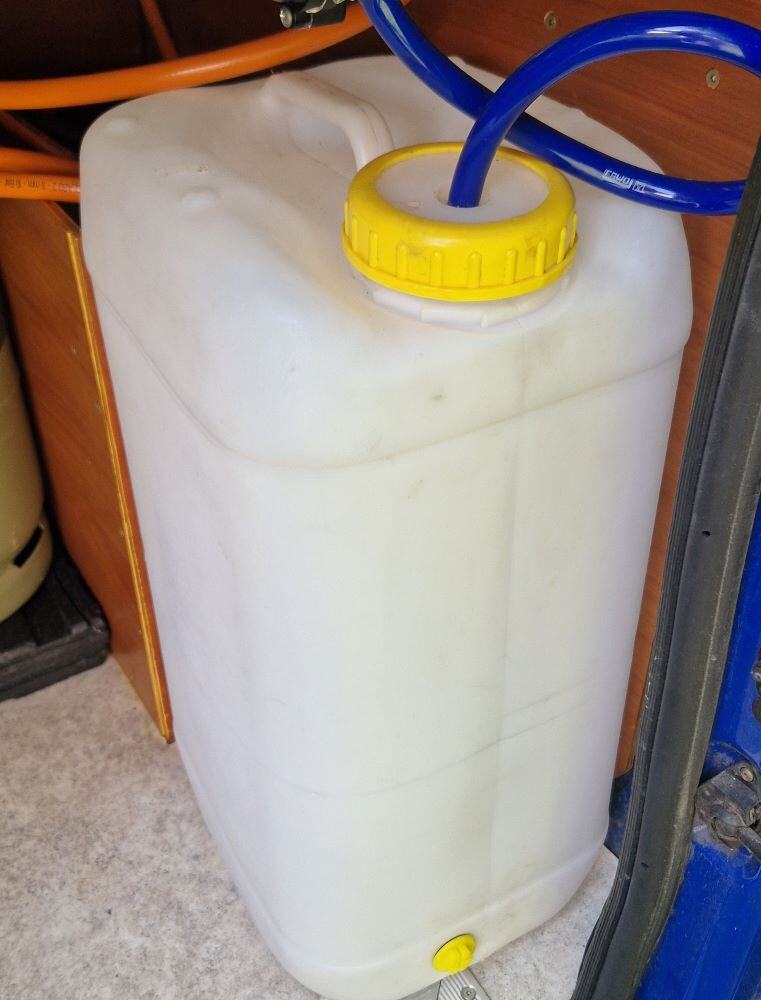A clean water tank is essential for a healthy and enjoyable travel experience. Whether you are an experienced motorhomer or just starting your camper adventure, these tips will help you keep your water tank fresh and free of bacteria.
Why clean the water tank of your camper?
Let's first consider why it's so important to clean your water tank regularly. If your water tank sits idle for a long time or is exposed to high temperatures, there is an increased chance of bacterial growth. No one wants an unpleasant smell or, worse yet, health problems during their trip. By regularly cleaning your water tank, you keep the water clean and safe for drinking, cooking, and showering in your camper.
Tips for cleaning the water tank
1. Use of cleaning tablets
One of the most effective ways to combat bacteria in your water tank is to use denture cleaning tablets. These tablets are specifically designed to remove 99% of bacteria. Yes, you read that right—you can use these tablets to combat bacteria in your water tank as well.
How to use them:
-
- Fill the water tank with clean water.
- Add the recommended amount of cleaning tablets (follow the instructions on the packaging).
- Let the mixture sit in the tank for a few hours (ideally overnight).
- Rinse the tank thoroughly with clean water.
2. Emptying regularly
A golden rule: never leave water in the tank for too long after your trip. Bacteria thrive in stagnant water, especially at higher temperatures. Make sure you completely empty and dry the tank when the camper is not in use.
Tip: Park your camper in a place where you can easily empty the tank. Ensure that you do this before leaving the camper stationary for an extended period.
3. Use a water filter
Investing in a good water filter can work wonders for the quality of the water in your tank. A filter not only helps remove impurities but also improves the taste of the water. Additionally, it reduces the risk of bacterial growth.
4. Maintenance of the water tank
Regular maintenance of your water tank is essential to ensure it remains in top condition. This includes cleaning the tank as well as checking for any leaks or damage.
Steps for maintenance:
-
- Thoroughly clean the tank every few months.
- Inspect the tank and pipes for cracks or leaks.
- Replace outdated parts promptly.
5. Use of specific cleaning agents
There are various specific cleaning agents on the market specially designed for cleaning camper water tanks. These agents are usually stronger than regular household cleaning products and are more effective in killing bacteria and removing deposits.
Recommended brands: Steradent, Thetford and Gently
6. Keep the fill hose clean
The fill hose is an important link in the process of filling your water tank. Make sure it is clean to prevent inadvertently introducing bacteria into your tank. Regularly flush the hose with clean water and store it in a clean, dry place.
7. Avoid stagnant water
Try to avoid stagnant water as much as possible. You can do this by regularly refreshing the water, even if you use the camper often. The fresher the water, the less chance there is of bacterial growth.
8. Use of silver ions
Silver ions are another effective way to combat bacteria in the water tank. These ions kill bacteria and mould, ensuring the water stays fresh longer. You can use silver ion filters or silver ion solutions for this purpose.
Additional tips for a clean water tank
- Fill the tank with clean water: Always use clean and filtered water to fill the tank.
- Flush regularly: Regularly flush the tank to remove any bacteria and deposits.
- Check the water quality: Use test strips to check the quality of the water in the tank.
A clean water tank is essential for a healthy and enjoyable camper experience. By following the tips in this blog, you ensure that you always have clean and safe water on hand during your adventures.

Comments